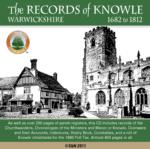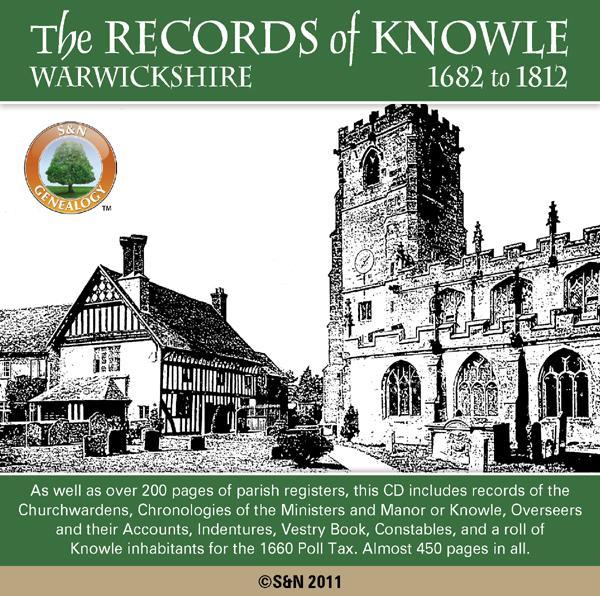Search Results for: “poll book”
Warwickshire, The Records of Knowle, 1682-1812

As well as over 200 pages of registers, this CD includes records of the Churchwardens (1673-1707 and extracts to 1842), Overseers and their Accounts (extracts 1705-1836), Indentures (1675-1838), Vestry Book (1837-1885), and Constables (1818-1839). There is an article on the founder of the Church and Guild, Walter Cook, while further chapters cover a Record of a Manor Court at Knowle in 1278, a Certificate of Consecration of the Church, two medieval wills, a 1616 inventory, a roll of Knowle inhab More Info
Product Code: GRD5945
Can't find what you're looking for? Try using our filter system to narrow down your search.
Available through our sister site GenFair
The Medieval Friaries, Hospitals & Chapelries of Bristol, by Joseph Bettey

978 1 911592 01 3 In addition to three monastic houses and eighteen parish churches, four friaries and many hospitals, almshouses and chapels were crowded in and around Bristol in the later Middle Ages. This book relates how these institutions were founded, built and supported by pious benefactors; how they provided help and relief to the sick, the old, the destitute and the outcasts of soc...More Info
The Surgeons and the Bristol School of Artists, by Michael Whitfield

978 1 911592 28 0 The cover pictures show portraits of John King as Surgeon with a skull, and as artist with sketch pad and brush. For he, like several other surgeons, was also a prolific artist, one of what has been called the Bristol School as it flourished in the period 1800 – 1840. Here Michael Whitfield (author of many other ALHA booklets) tells their story. This book is sho...More Info
The Butlers & the coal-tar distillery at Crew's Hole
Brian Vincent & Raymond Holland 978 1 911592 29 7 The Crew’s Hole coal-tar distillery was set up by Brunel in 1843 with young William Butler as manager. It became a family firm and remained so to 1970, while the Butlers became an important Bristol family. Here is their story. Brian Vincent, PhD, Dsc, FRSC is emeritus professor and senior research fellow in chemistry at the University...More Info
Around Pinner Through Time

Pinner was one of the ancient villages of Middlesex. Lanes led from its High Street to small hamlets, a handful of grand houses, the common fields, woods, and places further afield. By the nineteenth century, the countryside was a patchwork of farms, supplying London's needs. People came to Pinner from home counties, and then from London by railway. Villas appeared in the hamlets, and the expandin...More Info
Pinner: Hatch End, North Harrow and Rayners Lane

The success of 1994’s Pinner, Hatch End, North Harrow and Rayners Lane. A Pictorial History gave Pinner Local History Society unrivalled access to old photographs that had previously languished unseen in private collections. Descendants of families which once lived here have also been inspired to ransack cellars and attics and the results of these searches are published here for the first time. ...More Info




